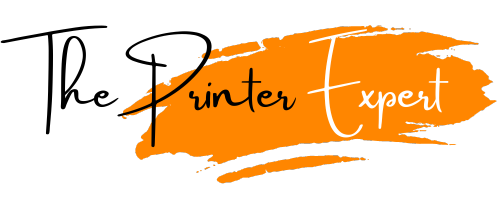How to Choose the Right Leather Sewing Machine [Guide 2025]
If you’ve ever tried sewing leather on a regular sewing machine, you know it can be quite a challenge. Leather known for its durability and elegance, finds its way into different products, from wallets and belts to jackets and furniture. It always stays in style due to its versatility.
Leather is not limited to product making but you can do leather printing using a special dye sublimation printing machine. The designs pop up on the surface as do on the fabric material.
But how exactly is this tough material sewn together? Handling the thickness of the leather isn’t an easy job for any crafter. That’s where leather sewing machines come into play.
Whether you’re a seasoned leatherworker or a beginner looking to dive into the craft, buying the best machine makes all the difference. In this blog, I’ll explore different types of leather sewing machines, and what features to look for while choosing the right one for your projects.
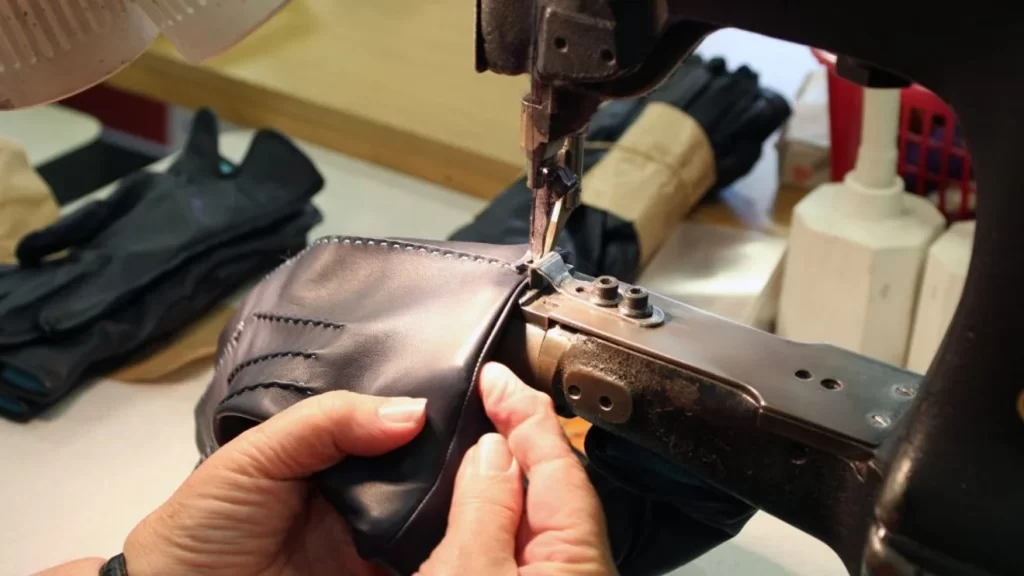
Table of Contents
Feathers to Look for in a Leather Sewing Machine
While shopping for a leather sewing machine, consider the several features to ensure the machine you’re buying can meet your needs:
- Heavy Duty Machine: A leather sewing machine boasts heavy-duty frames and components like the press machine used for screen printing. It is necessary to handle the thickness and density of leather. This is crucial to handle the rigors of pushing a needle through layers of leather. The durability of the machine can withstand the demands of leather sewing.
- Appropriate Presser Feet: Adjustable presser foot pressure lets you control how tightly the foot presses down on the leather. It varies for different thicknesses and textures. Right presser feet prevent leather during sewing. A walking foot is ideal for a leather sewing machine, as it can fit several layers of leather under it without leaving a mark.
- Powerful Motor: Since leather is thicker than fabrics like silk or cotton. That’s why it demands a powerful motor for sewing through thick leather. Look for machines with high torque to handle heavy materials without slowing down. This prevents the machine from stalling and lets the needle penetrate the leather.
- Specialized Needles: Leather needles are thicker and sturdier than standard sewing needles to withstand the pressure of piercing leather. Leather machines allow for thicker needle gauges. Use a needle with a sharp point and a chisel-shaped blade to prevent damage to the material and machine.
- Stitch Options: While straight stitches are commonly used for leather, additional stitch options are useful for decorative stitching. While the primary focus is on strong straight stitches you can create different stitch patterns for added strength and aesthetics.
- Additional Features: Features like an automatic needle threader, larger throat space, and a strong feed mechanism enhance the sewing experience, especially when you’re working with hard materials like leather.
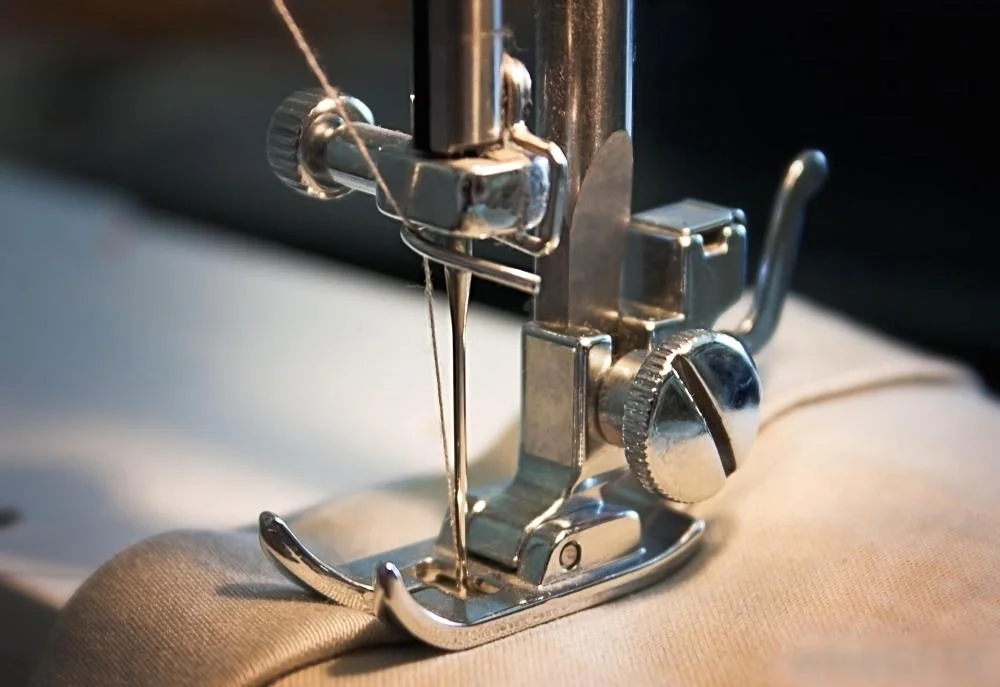
Top Leather Sewing Machines on the Market
There are two main categories of machines to sew leather. The first one is an industrial leather sewing machine; built for heavy-duty use and high production environments, this machine is powerful, feature-rich, and comes up with a hefty price tag.
The second one is a home leather sewing machine that is more affordable and user-friendly, it caters to hobbyists and small-scale crafters. They offer good stitch quality for basic leatherwork.
If you ever come across the customized box of the sewing machine, all the information about the features of this specific machine is mentioned on it. This text is printed on a cardboard box with the help of a specialized printing technique.
Some of the top sewing machines for leather on the market are:
- Singer 4423 Heavy-Duty Sewing Machine
This is a popular choice for beginners. It’s affordable, has a strong motor, and can handle multiple layers of leather. It’s easy to use, yet not compromise on the quality of stitching.
- Juki DNU-1541 Industrial Walking Foot Sewing Machine
This machine is a top choice for professionals. It’s known for its durability and ability to handle thick materials easily. It offers speed-control stitching and comes with an easy extension table to handle large leather projects.
- Brother ST371HD Strong and Tough Sewing Machine
Another great option for beginners, this machine offers a good balance of power and affordability, making it suitable for small leather projects. It not only handles leather but can also work for a variety of fabrics.
- Consew 206RB-5 Walking Foot Industrial Sewing Machine
This machine is perfect for those needing an industrial-grade machine for heavy-duty leatherwork, offering precise stitching and excellent tension control. It offers features like a large bobbin, high lift walking foot, and reverse function, making it ideal for sewing leather and similar fabrics.
- Janome HD3000 Heavy-Duty Sewing Machine
This machine is known for its heavy-duty features, making it popular among professionals. It’s ideal for large leather jobs as it can handle thick fabrics, provides speed-control stitching, and includes a convenient extension table.
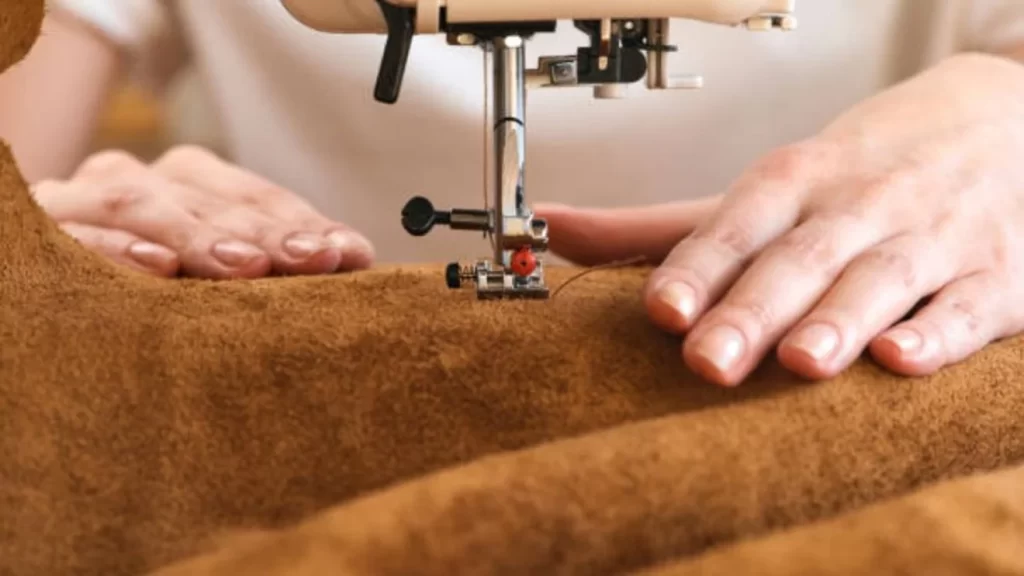
Tips for Sew Leather
Leather can be of various thicknesses, ranging from 0.3 mm snake leather to 7 mm bridle hide. So it’s important to use the right tools for the leather you’re sewing.
If leather is penetrated, it might create a permanent hole in the material, so use caution when stitching. Here are some helpful tips that you may find handy:
- Use the Right Thread: Thick, bonded nylon thread is ideal for leather sewing.
- Use the Right Needle and Thread: Invest in larger and stronger leather needles that can hold heavy-duty thread. Regular needles can break and regular thread may not hold up.
- Go Slow: Sewing leather requires patience. Go slow to maintain control and achieve even stitches.
- Use Longer Stitches: Always use longer stitches, as smaller stitches can damage the leather.
- Keep it Clean: Leather leaves residue on your machine. Clean your machine regularly to keep it running smoothly.
- Practice on Scraps: Practice on Scraps: Before starting your project, try out the machine on a small scrap piece of leather to adjust stitch length and tension before sewing. It’s like applying a pre-treatment solution onto the fabric with a DTG pretreatment machine to prepare the surface for printing.
- Hammer the Seems: After you’ve finished, smash the seams with a standard metal hammer or rubber mallet. This ensures they are ready for a superb finish.
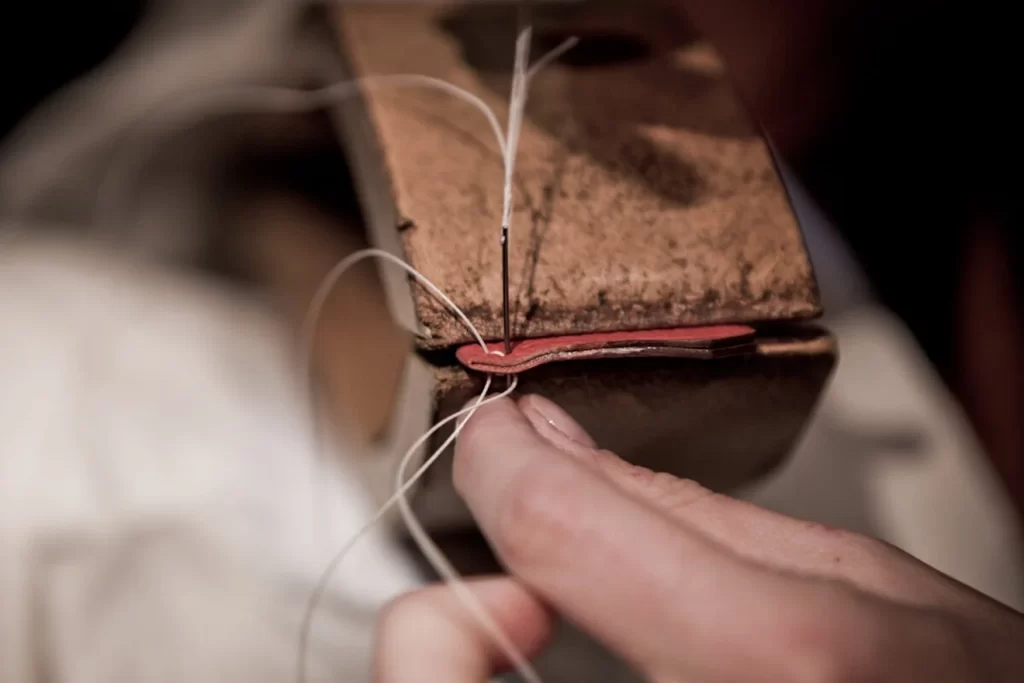
Why a Home Sewing Machine Just Won’t Sew Leather?
A regular home sewing machine is not designed to sew leather since the material is thick, rigid, and more compact than the other fabrics. Leather is far thicker than other types of fabric such as cotton and polyester, and home-use sewing machines commonly do not have a powerful motor or needle that is designed to easily sew through leather.
As a result, trying to force leather through a regular sewing machine can strain the motor, dull the needles quickly, or even damage the machine. The feed system in home machines, which moves fabric under the needle, also struggles with leather’s texture, leading to skipped stitches or uneven seams.
Another issue is that home sewing machines are not equipped to handle the specialized needles and threads needed for leatherwork. Leather requires thicker needles that have a cutting point, and the standard needles in home machines just can’t pierce the material properly.
Conclusion
Once you’ve chosen your best leather sewing machine, all you have in your kit is some leather to sew! Whether you’re crafting a simple wallet or a bag, belt, or other craft, the right machine will make your work easier and more enjoyable. If you’re a beginner at sewing leather, must follow the above tips to make your stitch the best. Happy sewing!
